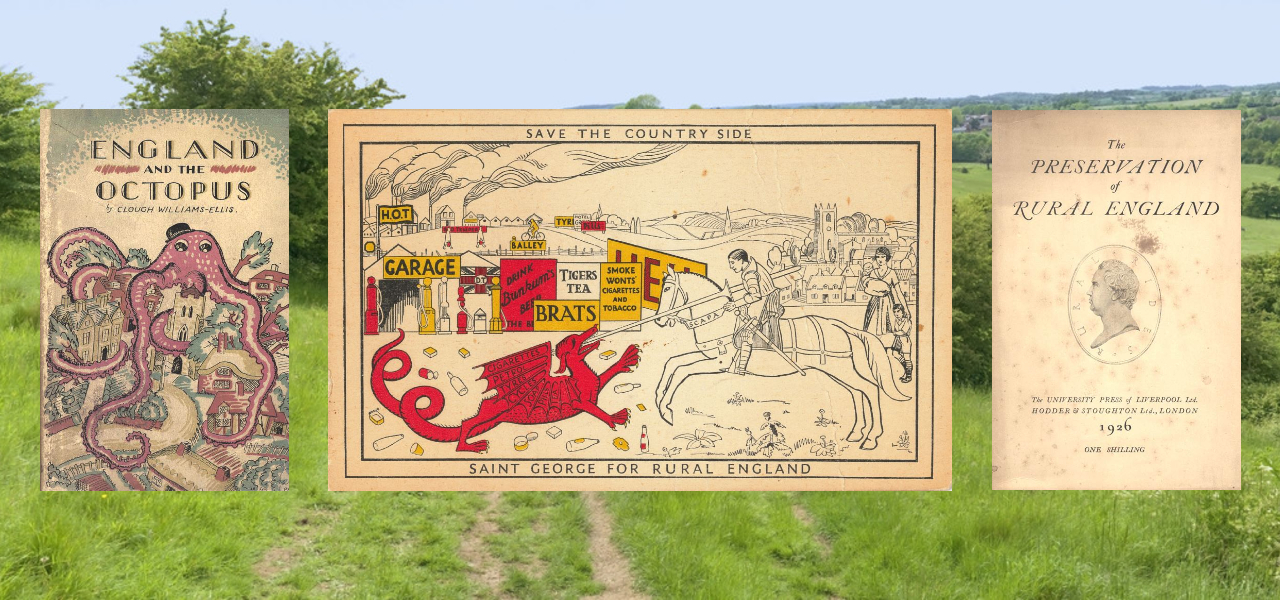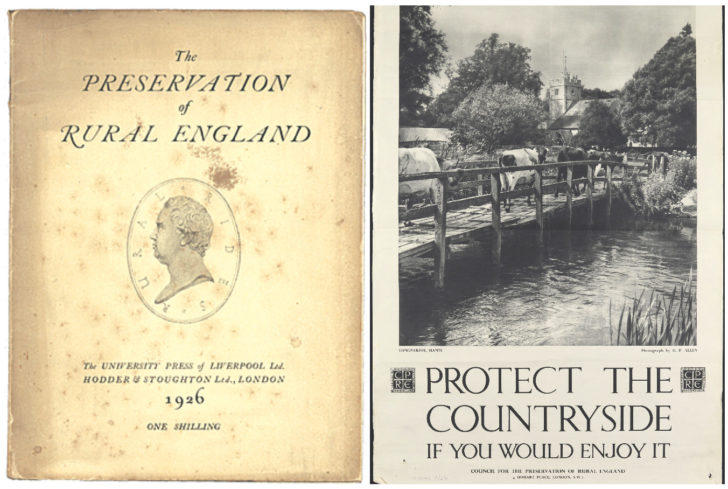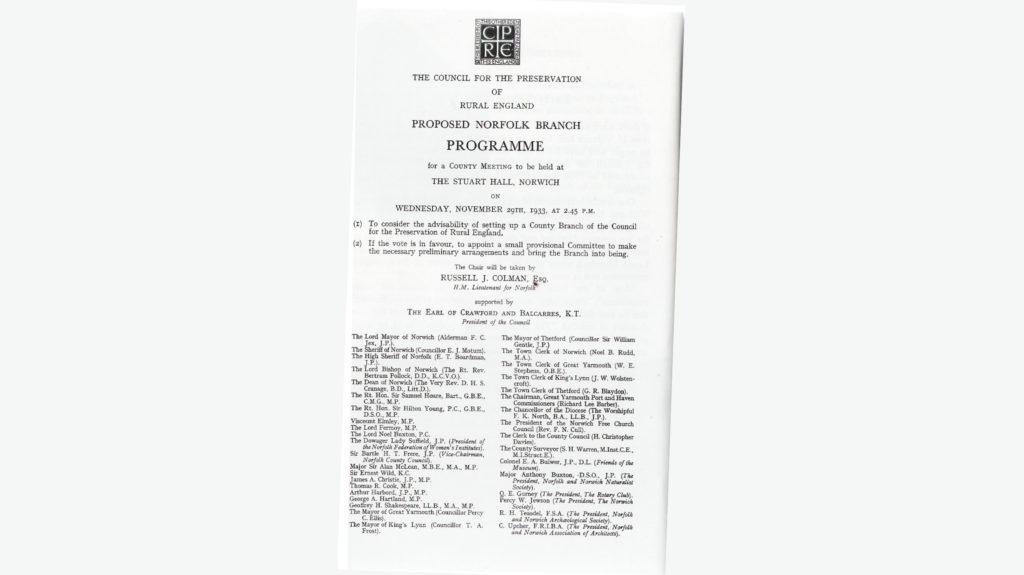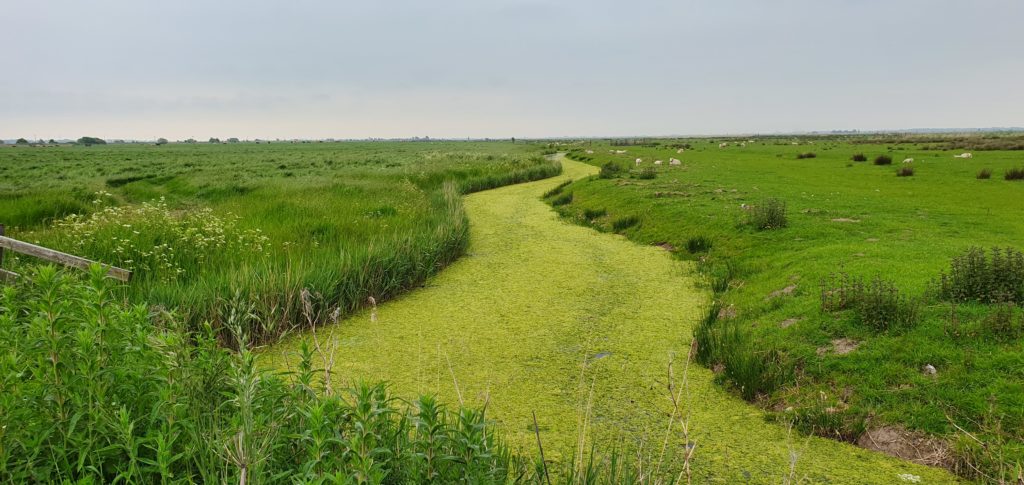1920s to 1950s: The early years

How CPRE was formed
The realisation that unregulated development could destroy the countryside that represented the England that so many had fought for in the trenches of the First World War triggered a series of appeals to government to take control of the sprawling building boom of the mid-twenties.
The Campaign to Protect Rural England was founded in London by Sir Patrick Abercrombie in 1926 and soon became a national body of recognised influence. Its original aim was to bring planning control to bear on the countryside, not just urban areas, to limit urban sprawl and ribbon development. The result was the Council for the Preservation of Rural England.

During the 1929 General election, the leaders of the three main political parties, (Prime minister Stanley Baldwin, Ramsay MacDonald and David Lloyd George) signed a joint letter published in the Times newspaper. This letter confirmed their shared view that the countryside should be protected and endorsed their collective support for the Council for the Preservation of Rural England.
Until the 1960s, CPRE was known as the Council for the Preservation of Rural England. It became the Council for the Protection of Rural England in 2003, changing its name to the Campaign to Protect Rural England until 2020 when it became known as CPRE – The Countryside Charity.

How CPRE Norfolk was formed
County branches soon started to appear to support CPRE’s work at a local level and on 29th November 1933, a county meeting was held at the Stuart Hall to form the Norfolk branch.
In the 1930s the branch worked on problems with advertising hoardings, litter and the disappearance of hedgerows in rural areas. The abandonment of old cottages and barns was also reported, as well as road widening and tree felling along previously quiet country lanes.
The branch also drafted a paper to guide the reconditioning of timber framed and clay lumped cottages.
During the inter-war years, CPRE campaigned successfully for measures such as the Town and Country Planning Act 1932 and the Rights of Way Act 1932.
The branch supported the CPRE national campaigns which led to the first green belt around London, legislation to limit ribbon development in 1935, a campaign to create National Parks and protection for the South Downs.
Post-War Years
After the war, the branch was reactivated and first began to influence the design and setting of local authority housing. The branch actively supported rural housing schemes such as the Blakeney Neighbourhood Housing Society which bought and repaired vacant cottages for re-let to local villagers.
By the 1950s, population drift to the towns and increasing size of farm holdings meant that there were hundreds of farm cottages left abandoned and uninhabitable. The branch spoke of ‘dying villages’ and of concern for Norfolk’s legacy of outstanding medieval churches, many of which were now underused and in need of proper maintenance.
Better protection of the Norfolk Broads was also on the agenda and there were calls to designate the Broads as a National Park. An expansion of the tourist industry had not only threatened the tranquillity of the Broads but also its very ecology. Our members were involved in discussion over protection of this very valuable area.
The branch also supported a programme to rescue many of the derelict wind and water mills across the county.
National CPRE campaigns
CPRE called for protection of historic buildings, provisions for listing being included in the 1944 Town and Country Planning Act.
Its campaigns led to the National Parks and Access to the Countryside Act of 1949 and it successfully campaigned against two proposed new towns to protect agricultural land.
The Town and Country Planning Act 1947 achieved many of CPRE’s ambitions for planning in the countryside.
The National Parks and Access to the Countryside Act 1949 paved the way for the creation of National Parks after CPRE’s 20-year campaign as well as provision for National Nature Reserves and National Trails.






